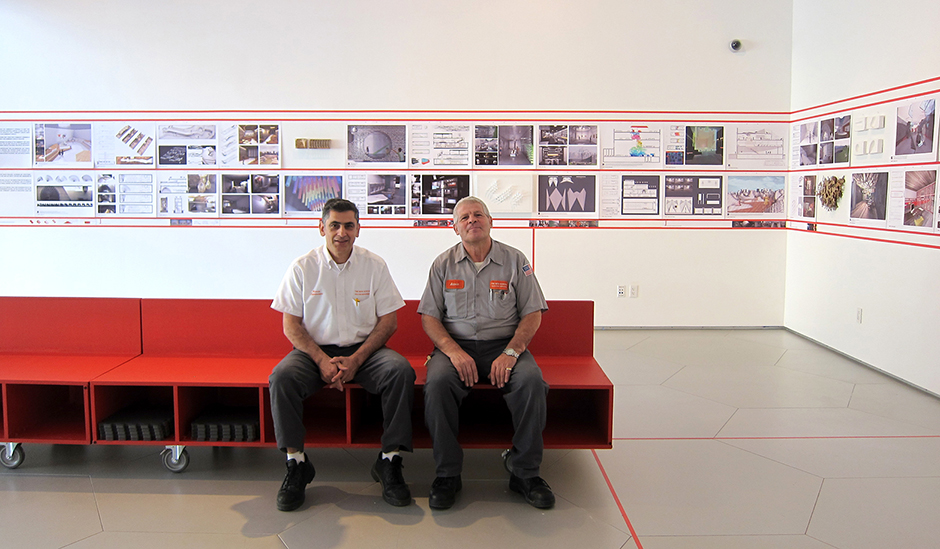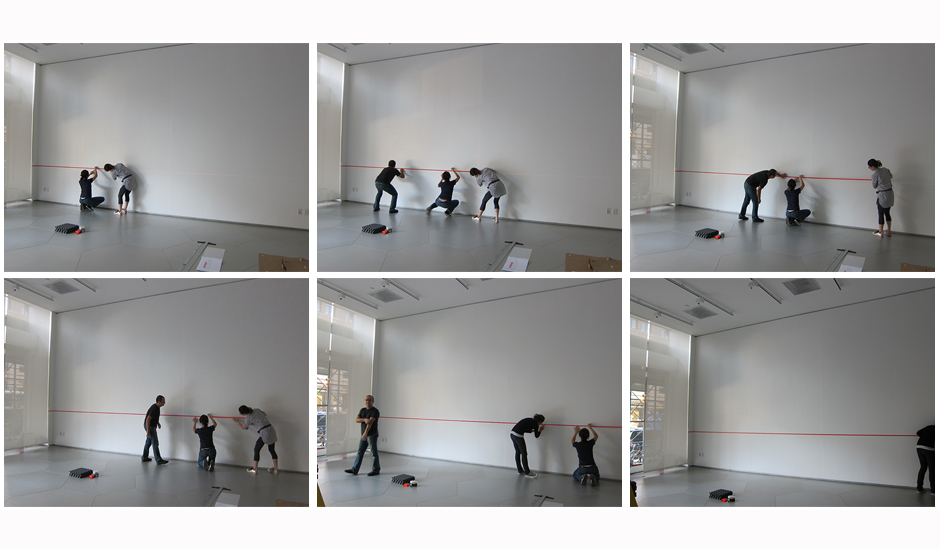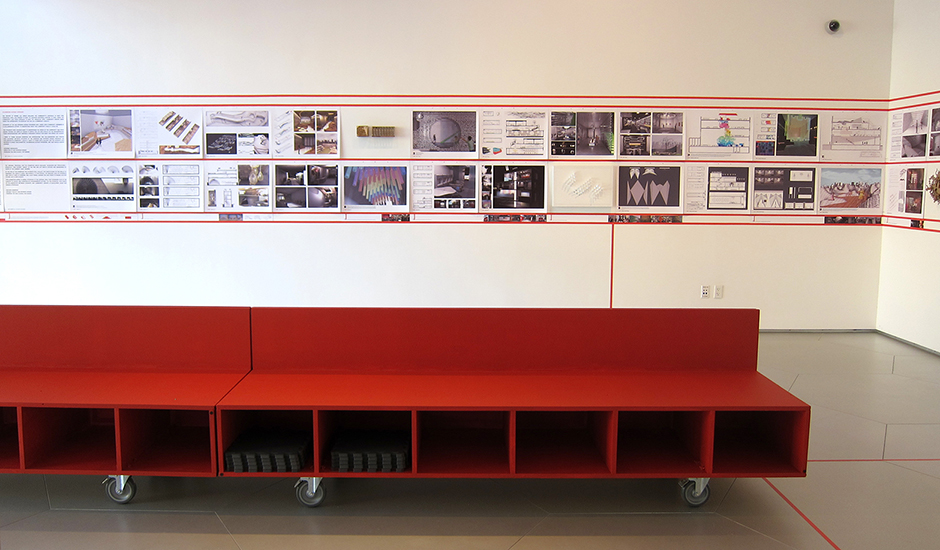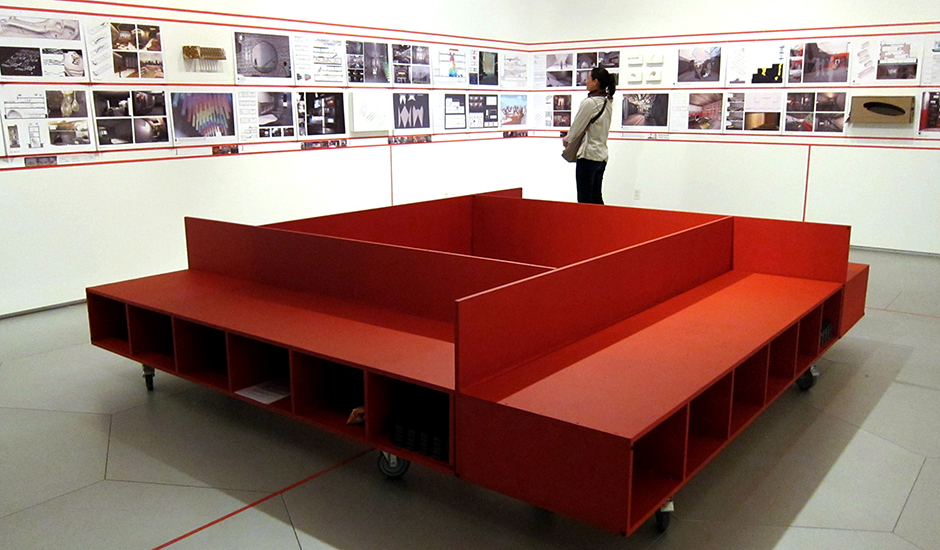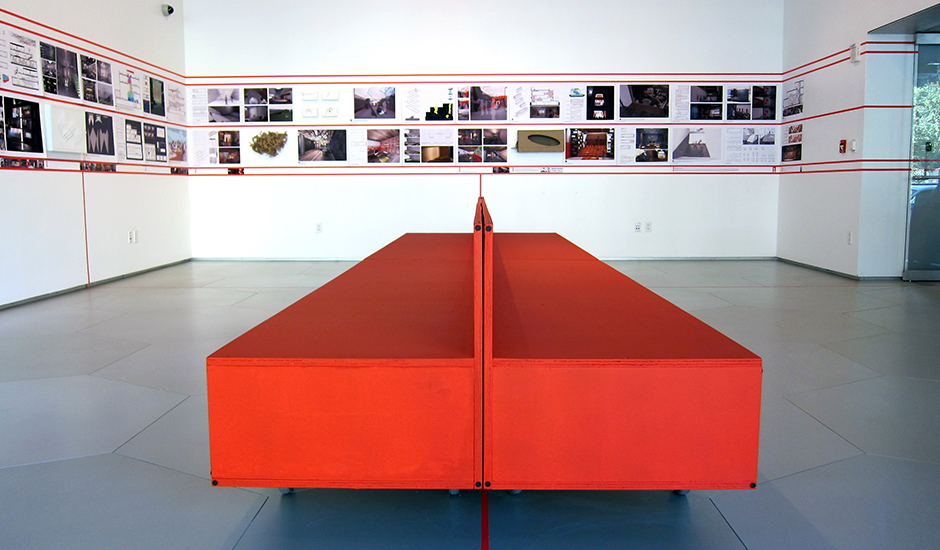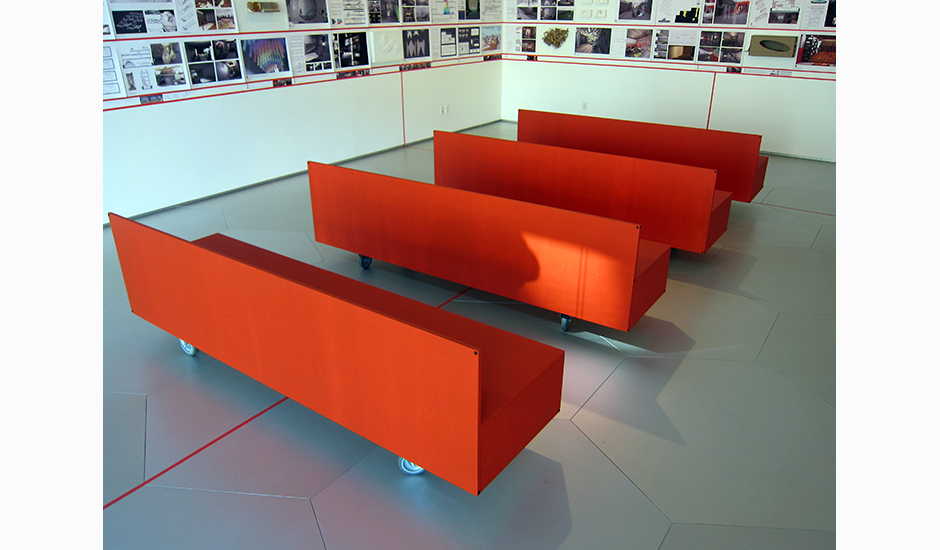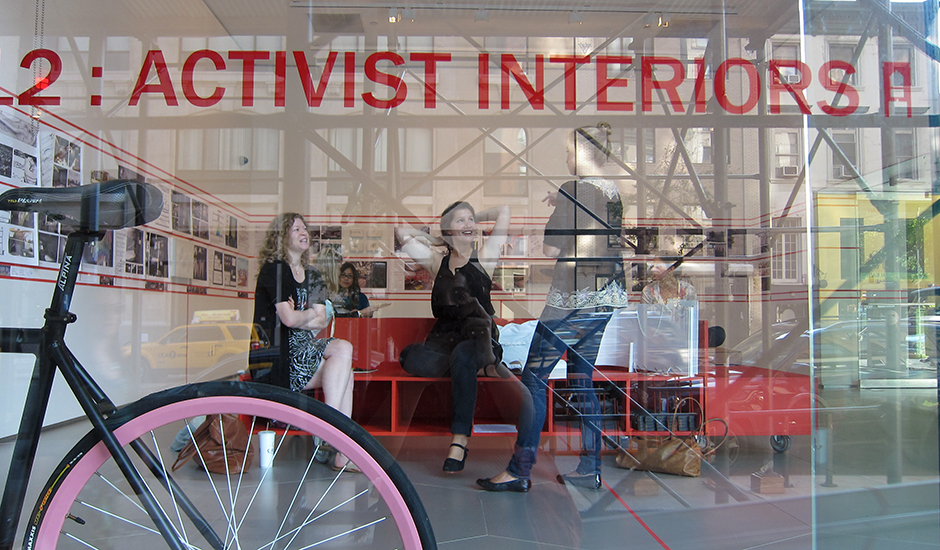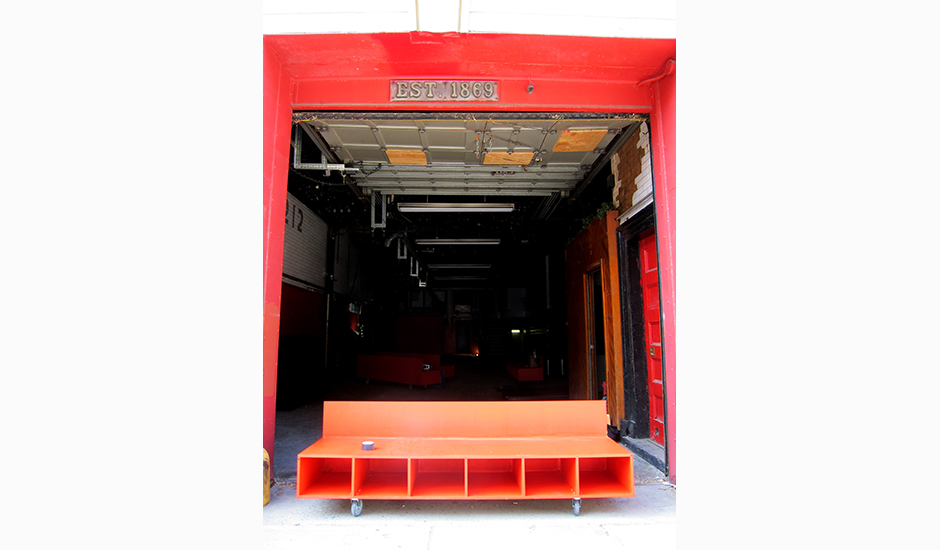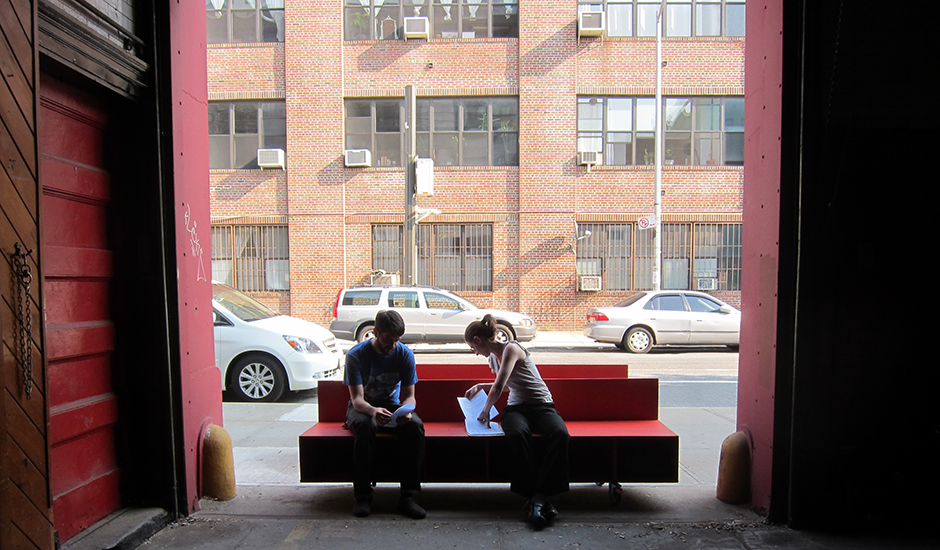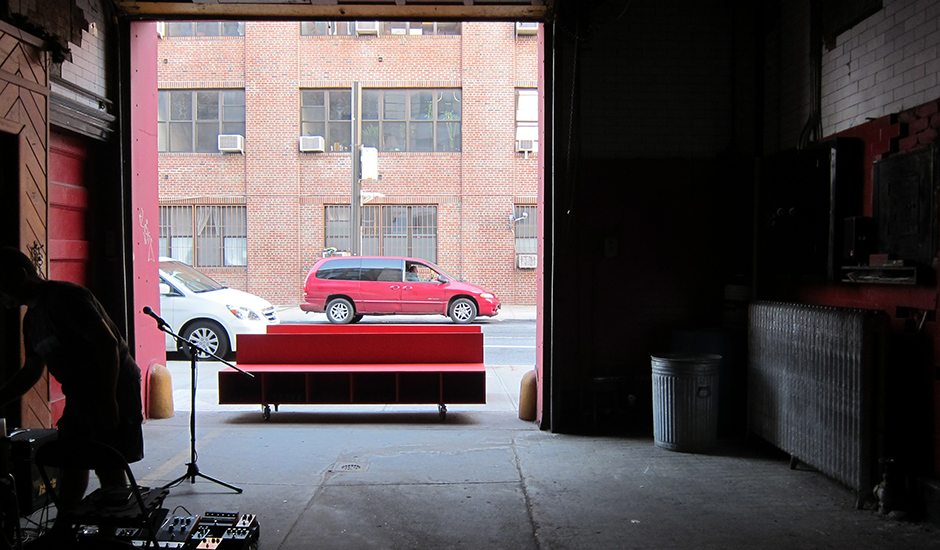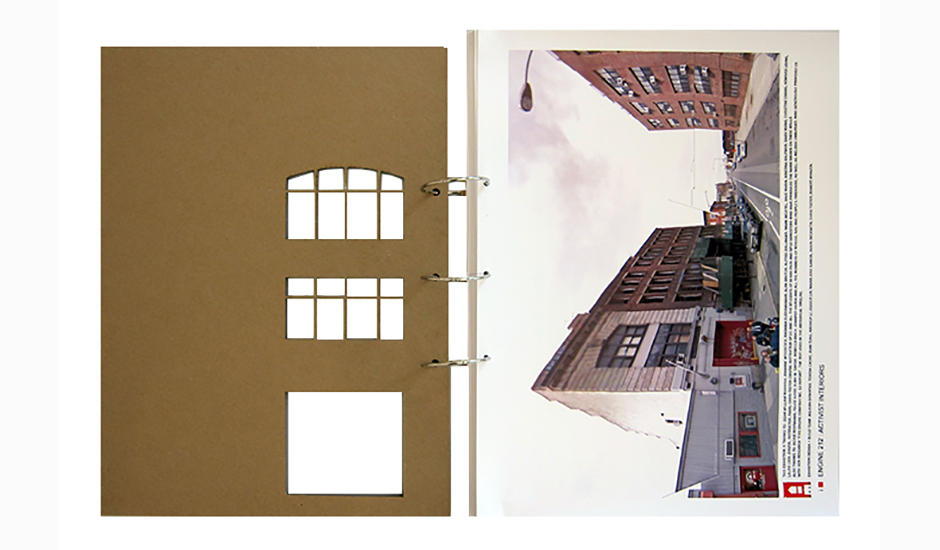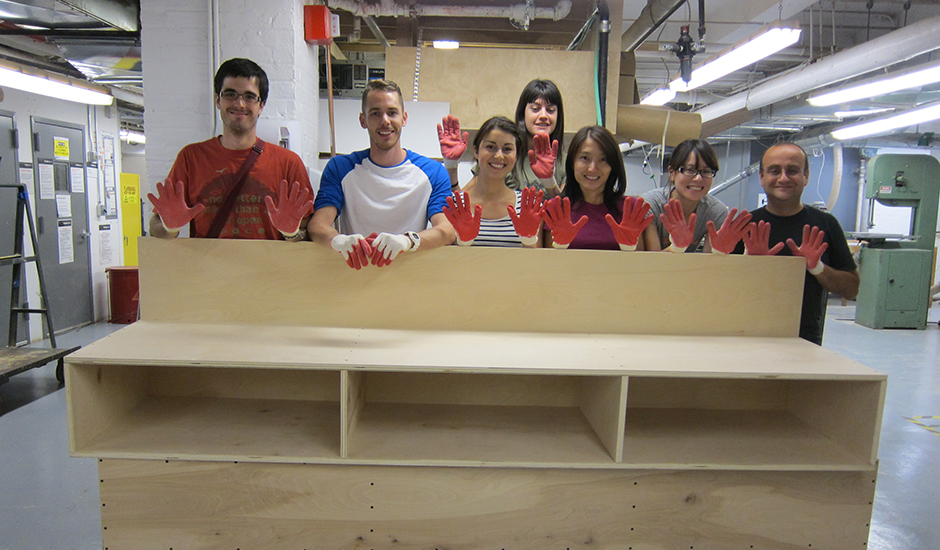Research, Exhibition Design, Production
Commissioned by: Arnold and Sheila Aronson Galleries, Parsons The New School for Design
Location: Arnold and Sheila Aronson Galleries @ Sheila C. Johnson Design Center
Parsons The New School for Design
Year: 2010
Website: Engine 212: Activist Interiors
A BOOK OF IDEAS & FOUR BENCHES
The exhibition ENGINE 212: ACTIVIST INTERIORS was a book of ideas which addressed the often overlooked impact of interiors and interior design on civic and urban life. The focus of the exhibition was work produced by Parsons Interior Design AAS students during two semesters. The students collaborated with non-profit activist community groups from Brooklyn who are currently working to transform Williamsburg’s Engine 212 (a defunct FDNY building) into a community and arts center.
The students and Northside Town Hall Community and Cultural Center worked together on a collection of proposals investigating the agency of interior design in the transformation of an infrastructural firehouse building into a community space. NTHCCC has won the development rights to convert the Engine 212 and is comprised of members from two historical community groups the Neighbors Allied for Good Growth (NAG) and People’s Firehouse, Inc.
The exhibition included the student proposals and documentation of their design process. It also presented historical documentation of the resistance and community activism that emerged through the occupation of Engine 212 for sixteen months in the 1970’s by the members of the community in order to stop—successfully, the city to shut down the fire station. Taking a cue from the footage of the documentary “People’s Firehouse”, which tells the story of how the interior space of the building was transformed into a social space of resistance, the gallery was transformed into an ‘occupiable space’ by the help of four portable benches which were used for the duration of the exhibition.
The original proposal for the exhibition which included ‘bleacher-like structures’, ironically, was deemed ‘unsafe’ by the Fire and Life Safety officer and abandoned in favor of the current ‘safe’ scheme which replaced ‘seating furniture’ with ‘bleachers’.
At the end of the exhibition the students collected the sheets hung on the walls to assemble the ‘Book of Ideas’ and donated it to the NTHCCC. The benches, built by students and faculty at Parsons, traveled across the East River to Engine 212 for future use in arts events such as Projected: Engine 212.
This exhibition hoped to bring attention to the critical role that interiors play in the context of social and constructed environments as well as the potential that exists in collaboration between students and community groups in developing ideas and design strategies.

